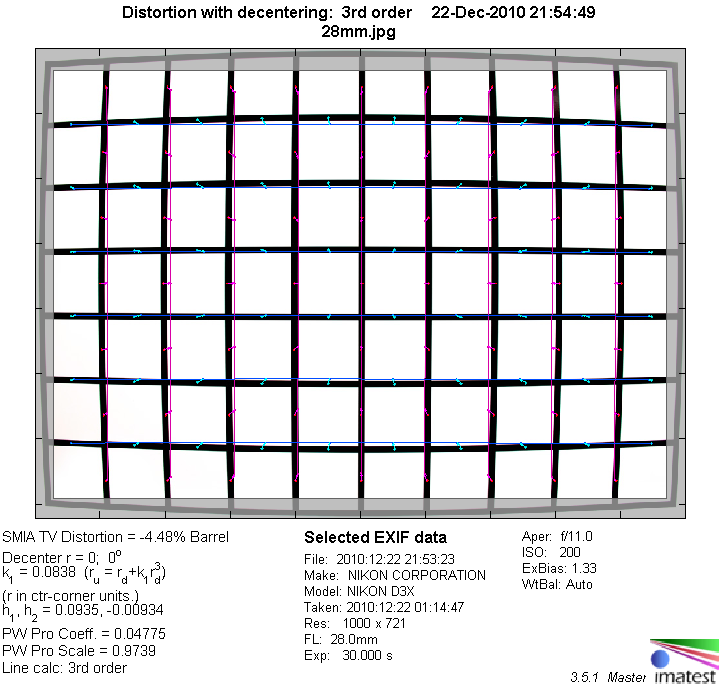|
Page 2 of 3

Distortion
Superzoom lenses can be expected to show pronounced image distortion, but the 28-300 VR does so on an annoyingly high level. There is a massive amount of barrel distortion at the widest setting, switching to very pronounced pincushion distortion at 50mm.
At 100 mm, pincushion distortion reaches a value of 2.51%, which can be very disturbing for many subjects. The amount of distortion decreases a little with longer focal lengths, but nonetheless stays on a rather high level.
The good news is that at any focal length distortion is uniform and can easily be corrected by software in post processing (at the expense of resolution and a little field of view, of course).
|
Move the mouse cursor over the focal length text marks below to observe the respective distortion
|
| 28mm |
50mm |
100mm |
200mm |
300mm |
|

|
The chart above has a real-world size of about 120x80cm.
These two images, shot at 28mm and 105mm, give an impression of the impact of high distortion on real world images. Both images are also available in full resolution in the sample image section on the final page of this review.


Vignetting
The lens shows a very high amount of vignetting at its shortest focal length wide open, but stopped down the light fall off comes down to low levels that shouldn't be field-relevant for most subjects. At all other focal lengths vignetting is somewhat pronounced wide open, but stopping down just one stop helps to solve the issue except for critical scenes.
We're performing our vignetting analysis based on
(uncorrected) JPEGs straight from the camera. The JPG engine of the Nikon D3x features a rather flat
gradation curve, thus has a moderate contrast characteristic, resulting in comparatively low vignetting figures - the
corresponding Canon figures are roughly 40% higher due to the more
aggressive default contrast setting.

MTF (resolution)
The lens produces very good resolution figures in the image center at most focal lengths and apertures, even (just) reaching excellent resolution at 28mm slightly stopped down. However, there's a clear tendency towards slightly lower resolution with increasing focal length and at both ends of the focal range the image center is a little soft wide open.
The situation is very different on the image borders and corners. Stopping down allows for good resolution at some focal lengths, but in summary the sharpness achieved here is rather low in general.
Please note that the MTF results are not directly comparable across the different systems!
Below is a simplified summary of the formal findings. The chart shows line widths
per picture height (LW/PH) which can be taken as a measure for sharpness.
If you want to know more about the MTF50 figures you may check out the corresponding
Imatest Explanations

Chromatic Aberrations (CAs)
Chromatic aberrations (color shadows at harsh contrast transitions) are rather high at most focal lengths and aperture settings.
However, CAs can easily be corrected in software or by the camera itself (most modern Nikon DSLRs remove CAs themselves if you shoot JPGs).

|